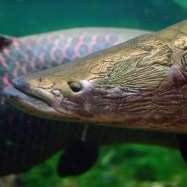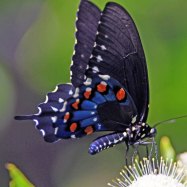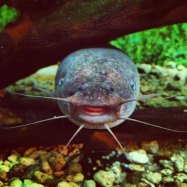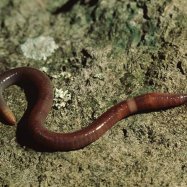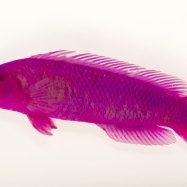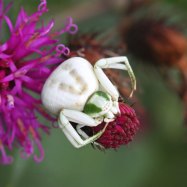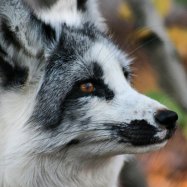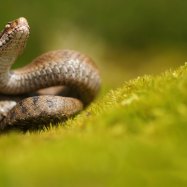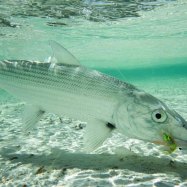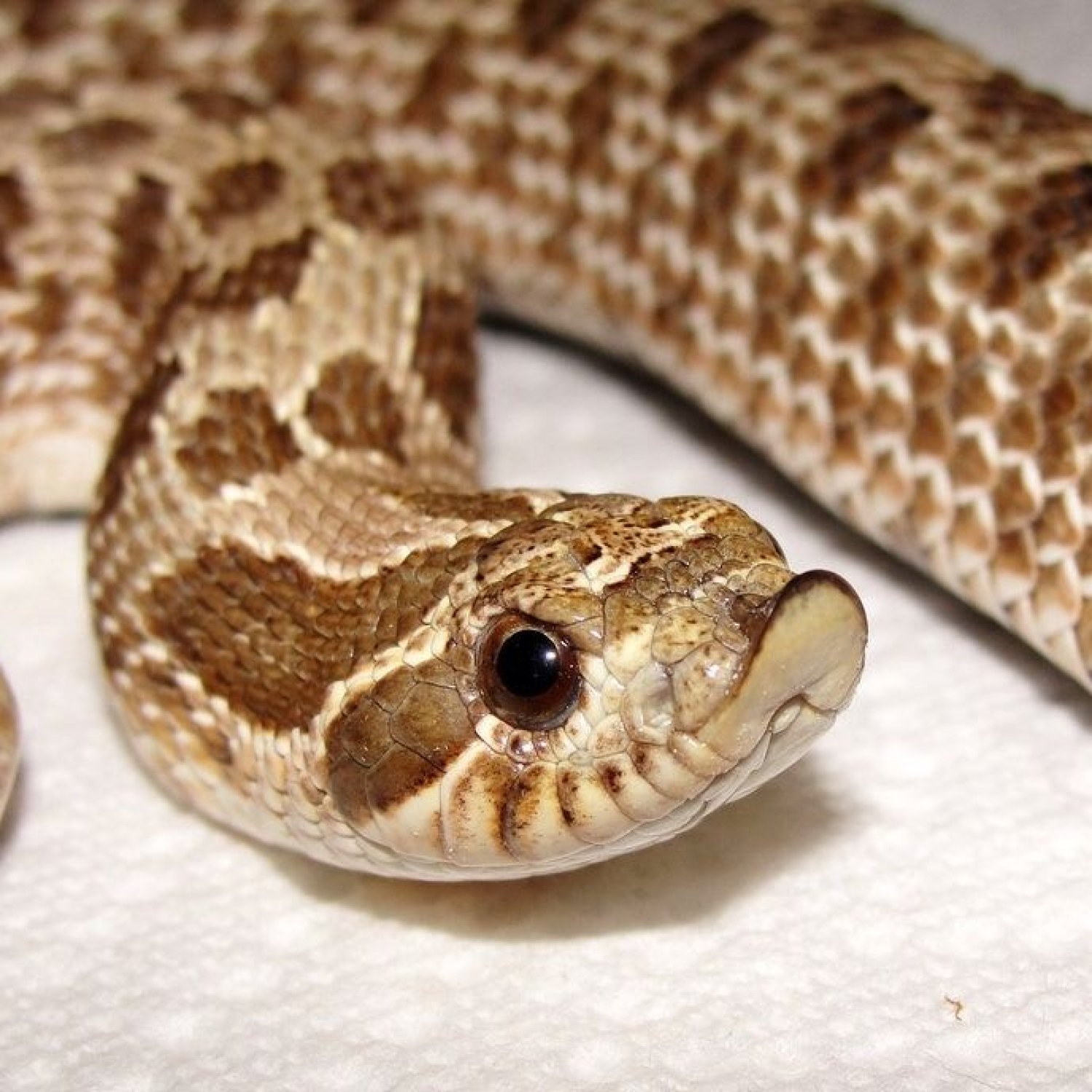
Plains Hognose Snake
2 to 3 feet
The Plains Hognose Snake, found in the Great Plains region, is a unique and fascinating member of the Colubridae family. These slender and harmless snakes can grow up to 2-3 feet in length, with a thick body and upturned snout. Keep an eye out for these beautiful snakes on your next hike! #PlainsHognoseSnake #GreatPlains #Colubridae
Animal Details Summary:
Common Name: Plains Hognose Snake
Kingdom: Animalia
Habitat: Grasslands, prairies, open fields, sandy areas
The Unique and Fascinating World of Plains Hognose Snakes
The animal kingdom is full of diverse and fascinating creatures, each with their own unique set of attributes and characteristics. One such creature that stands out among the rest is the Plains Hognose Snake, also known by its scientific name Heterodon nasicus. This small but mighty snake is a master of disguise, with a range of features and behaviors that make it a true marvel of nature.From its unusual nose shape to its diverse habitat and feeding methods, there is so much to discover about the Plains Hognose Snake Plains Hognose Snake. So, let's dive into the world of this remarkable reptile and uncover what makes it such an intriguing and enigmatic creature.
The Taxonomic Classification of the Plains Hognose Snake
Before delving into the various features of this snake species, it's essential to understand its place in the animal kingdom. The Plains Hognose Snake belongs to the Kingdom Animalia, which encompasses all animals. It falls under the Phylum Chordata, characterized by the presence of a notochord in its development stage. This is followed by the Class Reptilia, known for its cold-blooded vertebrates with scales or scutes on their skin.The Plains Hognose Snake belongs to the Order Squamata, which includes all scaled reptiles such as snakes, lizards, and amphisbaenians. Within this order, it is categorized under the Family Colubridae, which contains the largest number of species among all snake families. By understanding the taxonomic classification of this snake, we can see that it shares many similarities with other reptiles while also possessing its own unique features.
Geographical Distribution and Habitat
The Plains Hognose Snake is native to North America, with a wide range extending from the Great Plains region in the United States to Canada and Mexico Pyrenean Shepherd. Within these countries, they can be found in various states and provinces, including Texas, Oklahoma, Nebraska, Kansas, and more. This extensive distribution makes them one of the most widely distributed snakes in North America.Their preferred habitat is open grasslands, prairies, and sandy areas, which provide plenty of cover and opportunities for burrowing. However, they can also be found in wooded areas, especially near the edges of wetlands. This adaptability to different environments is one of the reasons for their extensive distribution and success as a species.
A Unique Adaptation: The Upturned Snout
One of the most distinct features of the Plains Hognose Snake is its upturned snout. This is where it gets its common name, "hognose," as the shape resembles that of a pig's snout. This unique adaptation serves several purposes, making it a crucial part of the snake's survival.Firstly, the upturned snout helps the Plains Hognose Snake burrow into the soil. They use their snout to dig through the sandy ground, searching for prey or a place to hide. It also aids in their feeding method, as they use their snouts to push aside sand and debris when foraging for toads, their primary prey.
The upturned snout also plays a role in their defense mechanism. When threatened, the snake will flatten its body, hiss, and strike with its mouth closed. If this fails to ward off a predator, the snake will flip onto its back and play dead, with its head tilted at a 90-degree angle. This behavior, coupled with the upturned snout, can make the snake look a bit like a small cobra, intimidating potential predators.
Appearance and Coloration
The coloration of the Plains Hognose Snake varies, with shades of brown, tan, and gray being the most common. They also have dark blotches on their backs, which can arrange themselves in a variety of patterns, from a cross-banded appearance to a more scattered pattern. This coloration helps them blend in with their surroundings, making them excellent at camouflage.In terms of size, these snakes are relatively small, averaging 2 to 3 feet in length. Their thick bodies and short tails give them a stout and sturdy appearance. They also have rough scales on their skin, which can give them a sandpapery texture.
Feeding Habits
As carnivorous creatures, the Plains Hognose Snake has a primarily insectivorous diet, with toads being their favorite prey. They have specialized teeth that are perfect for popping the toads' inflated bodies, ensuring a steady supply of food. They also consume a variety of other prey, including small mammals, reptiles, and bird eggs.Interestingly, the Plains Hognose Snake has a unique way of hunting its prey. They will dig through the soil, searching for toads or other prey, and will strike at the prey's head. They utilize their rear fangs to inject a mild venom that immobilizes their prey, making it easier to swallow whole. This venom is not harmful to humans and is primarily used for subduing small prey.
Behavior and Lifestyle
Plains Hognose Snakes are solitary creatures, preferring to live and hunt alone. They are most active during the day, especially on hot, sunny days, as they need the sun's warmth to regulate their body temperature. However, they may also be active at night during warmer months.During colder months, these snakes will hibernate, burrowing deep into the soil to wait out the cold weather. They will also use the burrows they've created to escape the sun and regulate their body temperature during hot days, showing their ability to adapt to changing conditions.
Conservation Status and Threats
The Plains Hognose Snake is not currently listed as a species of concern by the IUCN (International Union for Conservation of Nature). However, they do face several threats that could impact their population, including habitat destruction and fragmentation and road mortality. They are also sometimes killed by humans out of fear or misunderstanding of their behavior.Some states in the United States, such as New York and Illinois, have listed the Plains Hognose Snake as a species of concern and have enacted measures to protect them. However, there is still much more that can be done to safeguard their population and ensure their survival for future generations to appreciate and admire.
Fascinating Facts about Plains Hognose Snakes
To further appreciate the uniqueness of the Plains Hognose Snake, here are some fascinating facts about this incredible species:- Plains Hognose Snakes are known to play dead convincingly when threatened, even mimicking the smell of a decaying animal to further their act.
- Their venom is not harmful to humans, but they may cause some local swelling and discomfort if bitten.
- These snakes have a unique defense mechanism where they hiss, strike, and feign death, but they will also release a foul-smelling musk to deter predators.
- Female Plains Hognose Snakes lay 4 to 36 eggs in a clutch, and the hatchlings will emerge between July and September.
- Toads play a crucial role in the life cycle of these snakes, as they rely on them to maintain a healthy population.
Closing Thoughts
The Plains Hognose Snake may not be the most well-known or popular snake species, but it is undoubtedly a remarkable and fascinating creature. From its unique appearance to its diverse habitat and behaviors, there is so much to uncover and appreciate about this species.As with all wildlife, it is crucial to understand and respect these snakes and their place in the ecosystem. They are an essential and vital part of nature and play a crucial role in maintaining balance and diversity in their habitats. By learning more about these snakes, we can cultivate a deeper appreciation and admiration for the incredible world of the Plains Hognose Snake.

Plains Hognose Snake
Animal Details Plains Hognose Snake - Scientific Name: Heterodon nasicus
- Category: Animals P
- Scientific Name: Heterodon nasicus
- Common Name: Plains Hognose Snake
- Kingdom: Animalia
- Phylum: Chordata
- Class: Reptilia
- Order: Squamata
- Family: Colubridae
- Habitat: Grasslands, prairies, open fields, sandy areas
- Feeding Method: Carnivorous
- Geographical Distribution: North America
- Country of Origin: United States, Mexico, Canada
- Location: Great Plains region
- Animal Coloration: Varies, typically brown, tan or gray with dark blotches
- Body Shape: Thick body with an upturned snout
- Length: 2 to 3 feet
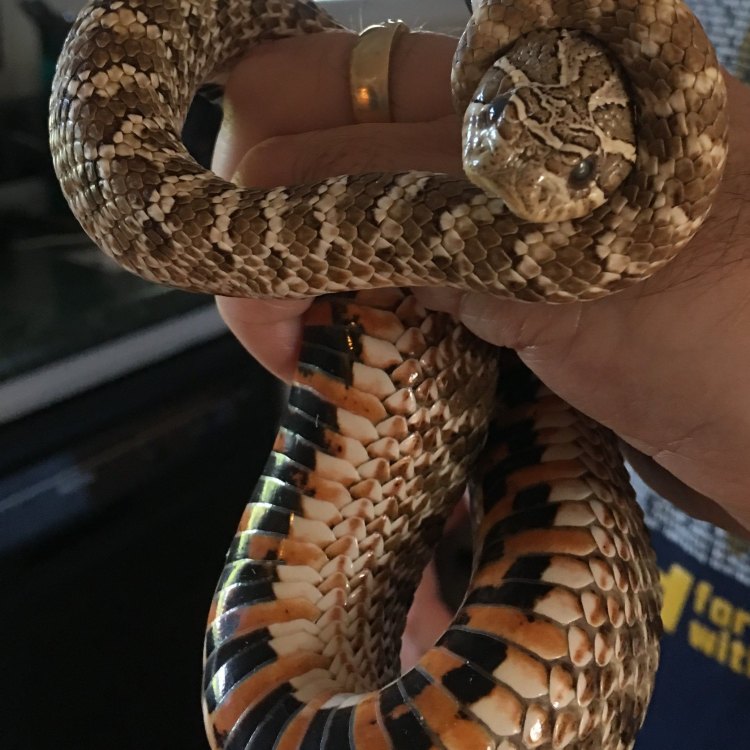
Plains Hognose Snake
- Adult Size: 2 to 3 feet
- Average Lifespan: 10 to 12 years
- Reproduction: Sexual
- Reproductive Behavior: Males perform elaborate courtship dances
- Sound or Call: Hissing and flattening of the neck
- Migration Pattern: Non-migratory
- Social Groups: Solitary
- Behavior: Defensive, known for playing dead
- Threats: Habitat loss, road mortality, persecution
- Conservation Status: Least Concern
- Impact on Ecosystem: Plays a role in rodent control
- Human Use: Collected as pets
- Distinctive Features: Upturned snout, ability to mimic a cobra by flattening its neck and hissing
- Interesting Facts: Plains hognose snakes are capable of eating toads by inflating their bodies and dislocating their jaws
- Predator: Raptors, larger snakes
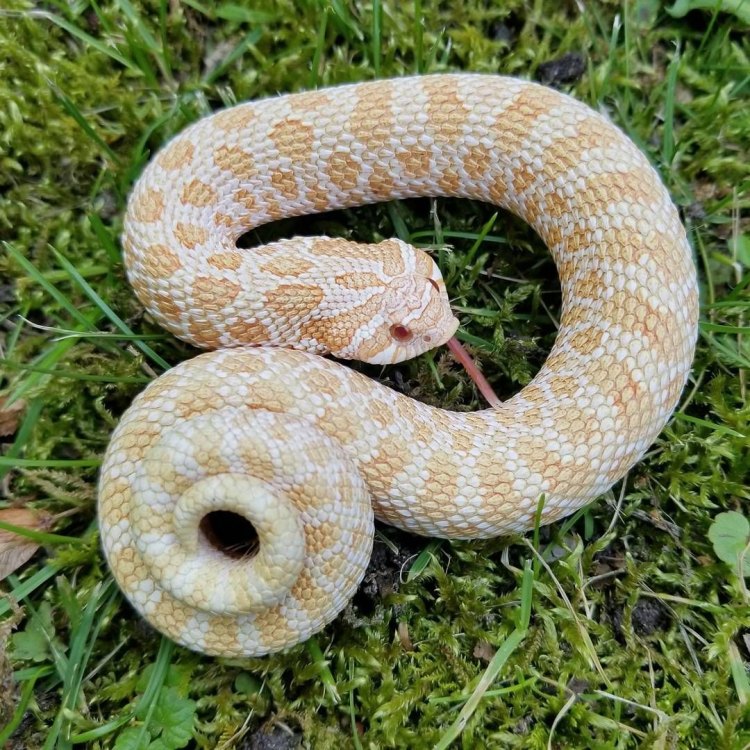
Heterodon nasicus
The Unique Features of the Plains Hognose Snake: Mimicry, Defense, and Habitat
As soon as you see it, you know it's something special. Its stout body is covered in a striking pattern of brown, black, and cream-colored spots. Its upturned snout almost resembles that of a pig, giving it its name, "hognose." And when threatened, it has the incredible ability to flatten its neck like a cobra and hiss loudly to intimidate its predators PeaceOfAnimals.Com. This is the Plains Hognose Snake, a fascinating reptile found in the central and western United States. In this article, we will delve into the unique features of this snake, its behavior, threats, and its impact on the ecosystem.Adult Plains Hognose Snakes are relatively small, measuring only 2 to 3 feet in length. They can be found in a variety of habitats, including grasslands, prairies, and even semi-arid areas. Their range extends from Canada in the north to Mexico in the south, covering states such as Texas, Oklahoma, Nebraska, and the Dakotas. These snakes are not picky eaters, feeding on a variety of prey such as rodents, lizards, and even toads. In fact, their ability to eat toads in a unique way is just one of the many intriguing features of this species.
Plains Hognose Snakes have an average lifespan of 10 to 12 years, making them relatively long-lived for a small reptile. They are sexually reproducing animals, with males performing elaborate courtship dances to attract females Pink Necked Green Pigeon. These dances involve swaying, head bobbing, and even releasing pheromones to entice the female. Once they have mated, the female will lay her eggs and leave them to hatch on their own. This may seem like a harsh parenting technique, but it allows the mother to expend her energy on finding food and avoiding predators.
When it comes to behavior, the Plains Hognose Snake is known for its defensive nature. They are not aggressive snakes, but when they feel threatened, they employ a unique defense mechanism - playing dead. This involves flipping onto their backs, opening their mouth, and sticking out their tongue as if they were dead. If this does not work, they may also hiss and flatten their neck like a cobra, making themselves look bigger and more intimidating to potential predators. This behavior is essential for their survival, as they are not venomous and need to rely on other tactics to protect themselves.
Despite their unique features and interesting behavior, Plains Hognose Snakes face numerous threats in their natural habitat. Habitat loss due to human development is a significant concern, as these snakes rely on large expanses of grasslands to thrive. Road mortality is also a significant threat, as these snakes are often killed while crossing roads. Some people may also perceive them as a threat and kill them out of fear or misunderstanding, making persecution another danger for these animals. These threats have resulted in a decline in populations in some areas, raising concerns for the conservation status of this species.
Currently, the Plains Hognose Snake is listed as "Least Concern" on the IUCN Red List of Threatened Species. This means that while there is cause for concern, their populations are still relatively stable. However, conservation efforts are still necessary to ensure their survival, as these snakes play a vital role in maintaining the balance of their ecosystem. They are excellent rodent controllers, and their presence helps to keep these populations in check. In addition, they also provide a food source for predators, such as raptors and larger snakes. Removing them from the ecosystem could have detrimental effects on the food chain.
Humans also have a role in the lives of Plains Hognose Snakes, as they are sometimes collected as pets. While this may seem harmless, it is vital to remember that these are wild animals and should not be taken from their natural habitat. In some states, it is illegal to collect wild animals as pets, and even in areas where it is allowed, it is essential to do so ethically and sustainably. Proper care and understanding of their natural behavior should always be a top priority for anyone interested in owning a Plains Hognose Snake.
One of the most distinctive and intriguing features of the Plains Hognose Snake is its ability to mimic a cobra. When threatened, they will flatten their necks, spread out their hood, and hiss loudly, often scaring away potential predators. This behavior is not only visually similar to a cobra, but it actually sounds similar too. While most snakes hiss by opening their mouth and forcing out air, the Plains Hognose Snake can hiss by pushing air through its nostrils, creating a sound similar to a cobra's. This impressive mimicry is just one of the many ways this species has adapted to survive in its natural environment.
Another interesting fact about Plains Hognose Snakes is their unique method of predation. As mentioned earlier, they are capable of eating toads, but their method is not as straightforward as other snakes. Toads have a gland on their back that secretes a toxin, making them unpalatable to most predators. However, the Plains Hognose Snake has evolved to be immune to this toxin. Not only that, but they also have the ability to inflate their bodies and dislocate their jaws, enabling them to eat the toads without harm.
In conclusion, the Plains Hognose Snake is a unique and fascinating species that plays a vital role in its ecosystem. From its distinct physical features to its defensive behavior and impressive mimicry, these snakes have a lot to offer in terms of their uniqueness. However, they also face various threats, and it is crucial to take action to protect and conserve them for future generations to appreciate. We must also remember to admire these creatures from a distance, allowing them to thrive in their natural habitat without human interference. The Plains Hognose Snake is a remarkable example of nature's complexity and beauty, and it is up to us to ensure their place in the world.
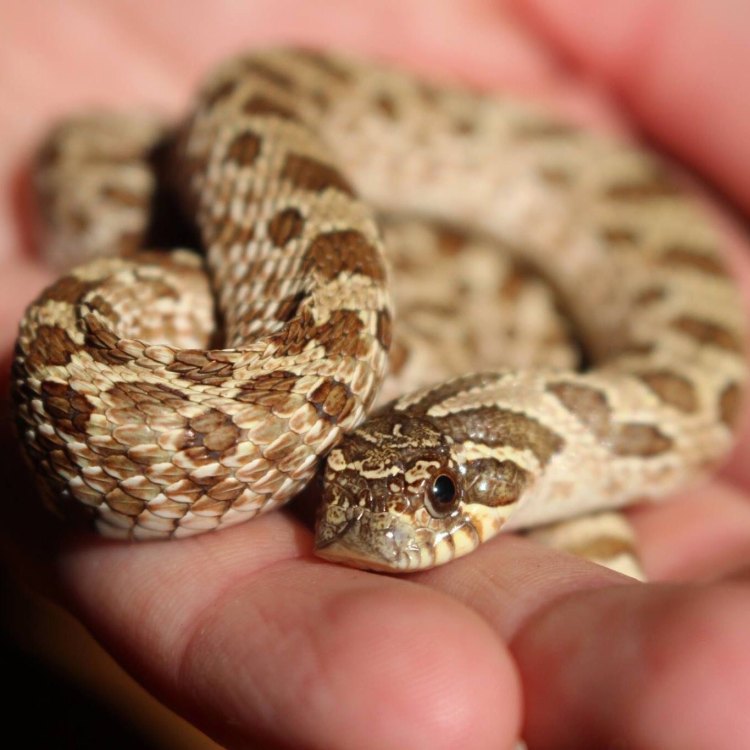
The Unique and Fascinating World of Plains Hognose Snakes
Disclaimer: The content provided is for informational purposes only. We cannot guarantee the accuracy of the information on this page 100%. All information provided here may change without prior notice.

